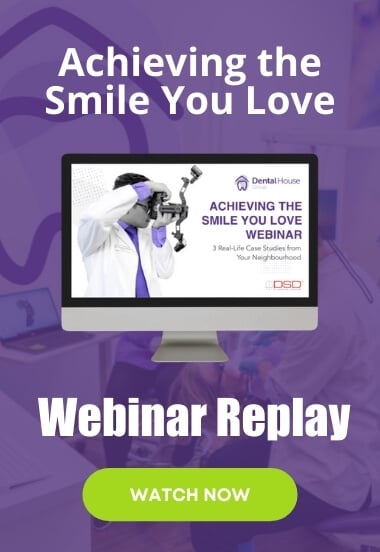Common Oral Cancers: Blocking Or Deleting a Tongue Protein May Lick ‘Em
Common Oral Cancers: Blocking Or Deleting a Tongue Protein May Lick ‘Em

Fundamentally, it’s a disease of genetic wear and tear. Over a lifetime, the body’s organ and tissue cells are constantly replenished because they repeatedly divide to make DNA-inclusive copies of themselves. Each time this replication takes place there’s the possibility of there being a genetic misstep where the incorrect DNA-base is integrated at some point in the sequence. In editing it’d be a typo. But one that spellcheck inserts unnoticed, that changes the meaning of the text.
In biology, it’s a mutation.
Most often, mutations like this are kept in check by various biological mechanisms designed to render them harmless. Sometimes however, a mutation causes cells to uncontrollably divide, which is a major threat: it appropriates all available resources, interrupts normal cellular function, causes system failure and spreads the mutation to other parts of the body.
Thus, is the story of cancer. Narrated by cytology, it is the Shakespearean tragedy of a complex connection determined by different structures and spans several scales in order to keep us alive. Cancer is molecular Macbeth: it is cellular chaos created of conflict and conflict with self where biology enacts the battle between Macbeth and himself, Macbeth and Lady Macbeth, and their friction with Scotland.
The irony of cancer is that its voracious need to exist ultimately kills itself. Somewhat like a male antechinus. This tiny, short-lived Australian marsupial goes on an uncontrollable mating spree over the two-to-three week season – encounters sometimes lasting up to14 hours – after which a fatal immune system breakdown occurs and he dies a ragged wreck.
August in Australia brings the burst of speed-mating that is antechinus’ one chance to pass on his genes: from virgin to vergin’ on ridiculous; from none to non-stop. He mates with as many females as he can, in violent, frenetic encounters. He does little else but distribute all the sperm he has because production of it stopped in July.
The testosterone and stress hormones coursing the blood of this semelparous little r**t rat exhausts him so thoroughly his body starts falling apart. His fur falls out. He suffers internal bleeding. Were Nature kind he’d have a heart attack and drop dead but instead his immune system collapses and he becomes riddled with gangrene.
Not enough to stop him wanting more though. In for a penny, in for a pound, pound, pound I guess because by the end of the mating season, physically decrepit males will still frantically search for last opportunities like a drunk local at pub’s close. By that time, not surprisingly, females avoid them.
As do the female antechinus.
A life programmed to not exist beyond eleven months and ends like an abused aged care patient has an upside: this short lifespan guarantees that of all the things that will kill them, it certainly won’t be cancer.
Because the longer an organism lives, the more genetic wear and tear and increased opportunity for cancerous mutations to occur. With the sheer number of cells in our body (~37 trillion), it can only be expected that the increased probability of cancer is dramatically affected by age; a premise established in the 1950s.

Oral squamous cell carcinoma (OSCC) is the most common type of malignant tumour of the head and neck and ranked the eighth leading cause of cancer with 300,000 new cases and 145,000 deaths per year worldwide. Standard management of the disease is based on the tumour−node−metastasis (TNM) classification in which the tumour size and location define the prognosis and treatment.
It is however, a flawed system.
Despite all efforts to improve the modalities, patients with the same TNM exhibit different clinical behaviours and treatment responses, giving substantial variability in clinical outcomes. Despite efforts to improve imaging and therapeutic modalities, recurrence ranges from 18% to 76% in patients undergoing standard treatment and around one-third of those with oral squamous cell carcinoma don’t survive it.
Thus the identification of complementary biological signatures was needed. US dental researchers have found deleting or inhibiting a protein in the tongue might stall tumour growth.
Genes tell cells how to make proteins to keep the cell working. If genes mutate, proteins do too and cells divide too much or too quickly and survive much longer than they usually would.
That’s what makes a tumour, and that’s what brings the significance of the findings of researchers at Boston University’s Henry M. Goldman School of Dental Medicine for new, more effective therapies in the treatment of oral cancer patients.
Published in the peer reviewed academic journal Molecular Cancer Research in February 2022, the team’s results found that the protein – an enzyme called lysine-specific demethylase 1 – is what chemo and immuno-oncology therapies can target to take down a tumour.
LSD1 isn’t the only troublemaker tumours: when it’s up-regulated, it messes with the Hippo signaling pathway (YAP) – a cell communication process that normally helps control organ growth and tissue regeneration. YAP, LSD1, and a couple of other proteins then get stuck in a cybernetic loop of cell aggression.
The research team broke the cycle by targeting YAP with a different inhibitor in an effort to nullify LSD1. It was an effective strategy. With a combination of common immunotherapy drugs, LSD1 is effectively switched off by a small molecule inhibitor that enters the cell and impedes its normal function. Already in trials for the treatment of other cancers, small molecule inhibitors had not previously been tested with oral cancer and the team found that disrupting LSD1 curbed the tumour’s growth.
This type of targeted therapy is a treatment whereby drugs to interrupt specific genes and proteins that enable cancer cells survive and replicate. It can affect the tissue in which cancer cells grow, or it can target cells related to its spread, like blood vessel cells and can also be used in combination with other cancer treatments – most commonly chemotherapy.
Not all cancers have targeted therapies available and it is a rapidly growing area of research with many current clinical trials.
To develop targeted therapies, researchers target specific genetic changes that encourage tumour growth. Ideally it’s a protein found only in cancer cells that can then be blocked, turned off or destroyed.
Apparently the chief risk factors for oral squamous cell carcinoma are smoking and alcohol, which is obviously bad news for some, but worse still is that oral cancer is often initially asymptomatic. To tone down that horror, typically oral screening by your dental professional is useful for early detection.
Another good reason to keep regular appointments with your dentist.
There is certainly a future for targeted therapies, as well as personalised cancer medicines. And as with most things, they have limitations. Just like we do. In the scheme of life, the universe and everything we’re little more than antechinus, really; where our unwavering, relentless focus on pleasure and convenience kills us all in the end.
DISCLAIMER:
The content has been made available for informational and educational purposes only. New Gisborne Dental House does not make any representation or warranties with respect to the accuracy, applicability, fitness, or completeness of the content.
The content is not intended to be a substitute for professional personal diagnosis or treatment. Always seek the advice of your dentist or another qualified health provider with any questions you may have regarding a dental or medical condition. Never disregard professional advice or delay seeking it because of something you have read or seen on the Site.












